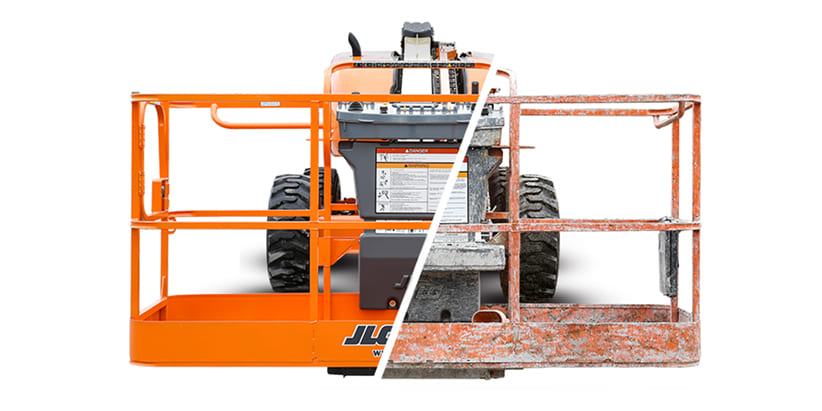When is the optimal time to replace equipment? There are many factors to consider when making that decision, and it’s usually not an easy one to make. No wonder why so many businesses in the access and construction industries put the decision off until their equipment decides for them by way of some catastrophic failure.
On one hand, businesses that do this may think they’ve gotten every bit of productivity and utilization they can from a particular asset. On the other, they may have unintentionally increased the amount of that investment. Here’s what we mean.
Lurking Downtime
Downtime can happen anytime. And as you’ve probably experienced, it usually happens at the worst possible time. But the probability of your equipment failing rises with each additional hour you have it in service. Not to mention, if you’re reading this, the equipment you own is probably operating in a harsh environment, like a construction site, all day. That means downtime is almost certain to happen at some point. It’s like snow on a mountainside–each flake gets you a little closer to an avalanche. But which flake will push it over the edge? And when? It could be two years, or it could be two days.
In a perfect world, almost everyone would replace or recondition equipment at regular intervals, if only to reduce the chance of downtime at the worst possible time. But the real world includes money, and budgets. Fortunately, it also includes equipment financing, which gives you more choice in the matter. In fact, the right financing plan can include regular replacements in the terms, as well as provisions to help you handle any unexpected equipment failures.
What’s the cost of downtime? That’s as hard to calculate considering it depends on so many factors. But it’s almost definitely greater than you think. Lost productivity, and ultimately lost revenue, certainly should figure into your thinking about equipment replacement cycles, as should considerations like cash on hand (link to Cash vs Finance blog), equipment financing, repair costs, safety, and the opportunities and challenges specific to your business.
Creeping Inefficiency
Just because equipment is working doesn’t mean it’s working well. Functional equipment can be inexpensive in one sense (you don’t spend money to replace it) but really expensive in another (you’re spending more time doing less and falling behind the competition in the process).
As with downtime, combating inefficiency comes at a cost. But the value of staying at peak productivity is usually far greater than the cost of replacement equipment. And options like equipment financing can help a business replace equipment at the right time, instead of the time that may be otherwise dictated by cash on hand, budget pressures, and other factors.
Mounting Maintenance Costs
Just about all equipment needs routine maintenance. But older equipment is more likely to need extraordinary amounts of it. It’s easy to think of total cost of ownership as being a set figure, but it actually rises over time, eating into – or overtaking – any savings businesses may see from running equipment until it won’t run anymore.
There’s also parts availability to consider. As equipment ages, maintenance parts become harder to source. And when you can get them, they tend to be more expensive. this is yet another factor that contributes to a rising total cost of ownership. 
Purchasing Pressure
Replacing equipment after it breaks can cost a business more and constrict your choices. Urgent deals usually aren’t the best deals for the party that’s in a hurry. If you need it now, you won’t have the luxury of waiting for a discounted price or other incentives like a further extended warranty or free shipping. And if you’re not able to wait on an order to come in, you’ll be limited to the stock your equipment dealer or manufacturer has on hand. Since you probably won’t be buying less than you need, chances are fairly good you’ll end up with more than you need – and spend more than you need – if the ideal choice isn’t available now.
Lock-in can also be a concern. Equipment can be a significant investment, and a rushed purchase can end up negatively influencing other purchases or even dictating whether or not you’ll pursue certain opportunities. Equipment purchases often cast a long shadow. So, it’s advantageous to act before you have to by using tools like financing to relieve pressure on cash, credit lines, and other resources that may be better used for other purposes.
Do You Have a Proactive Equipment Replacement Strategy?
For all these reasons, it’s usually best not to run essential equipment as long as possible. If you can’t do business without it, it’s just good business to replace it at regular intervals and ensure it’s there and doing all it should to help your business grow.
Want to stay up to date with industry news and trends similar to this? Make sure you subscribe below to receive monthly updates from Direct Access with newly posted content, so you never miss important information.











